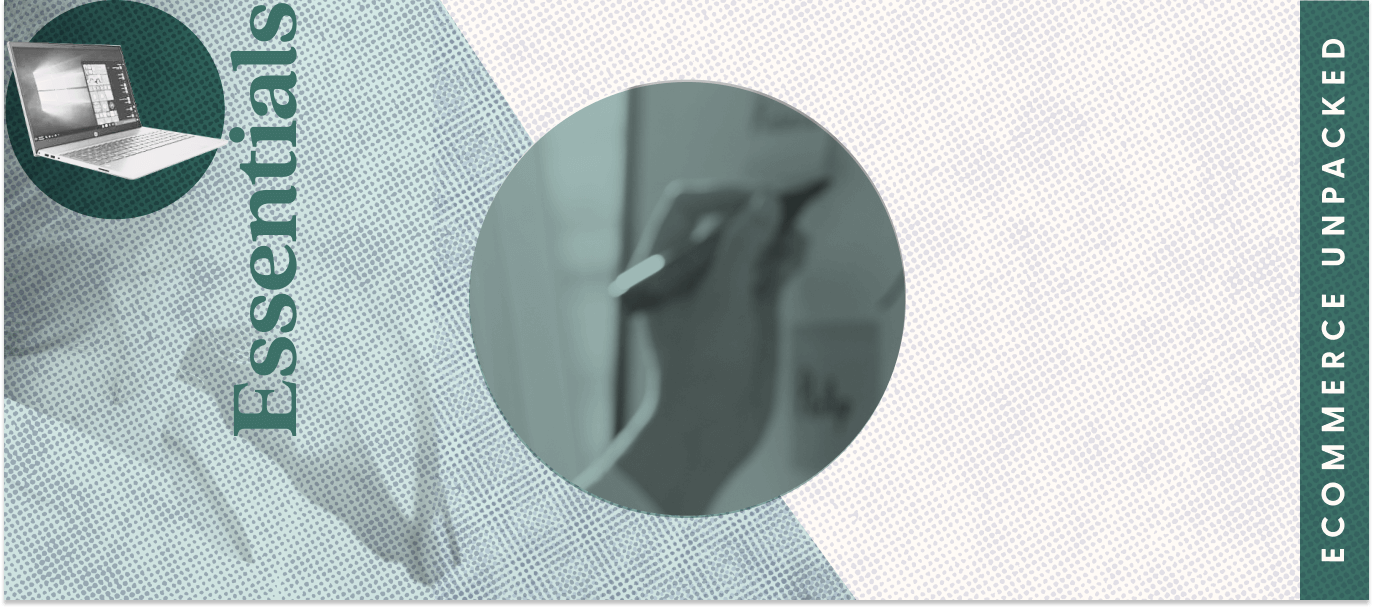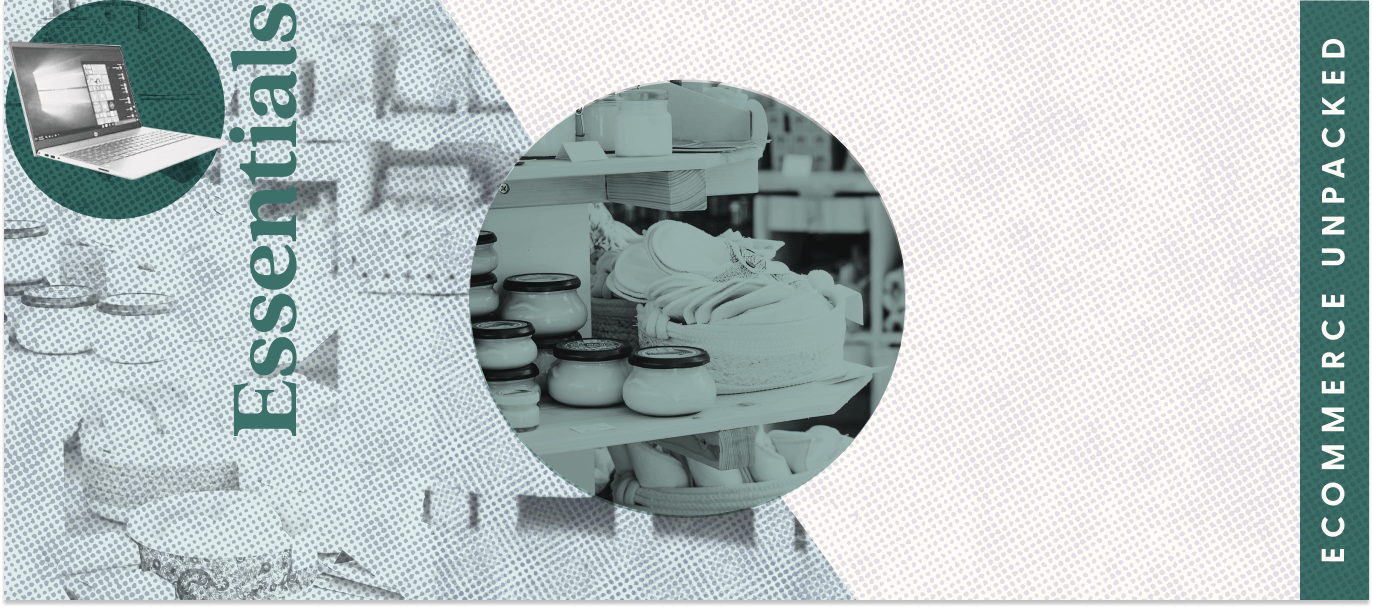An ecommerce business plan is designed to help you focus on your goals before launching your online store. A cohesive plan can help guide your decision-making process, convince potential investors, and prove the viability of your products or services.
According to the Bureau of Labor Statistics, about 20% of small businesses fail within the first year. Poor planning is often to blame. Without a good roadmap, it’s hard to make good decisions about your products, brand, and customers.
Ready to craft a winning ecommerce business plan? This article will go over each element you’ll need, and how to create it. Plus, we’ve included links to several ecommerce business plan templates at the bottom of the article.
Key takeaways
- An ecommerce business plan is a key document not only for convincing potential investors and recruiting team members, but also for helping you vet and refine your business idea.
- An ecommerce business plan is a single document that contains your current business strategy for selling online and plans for the future of your business.
- Your business plan is a living document that can (and should) change as your business grows and your strategies evolve.
- There are a number of business plan templates available online, which can serve as starting points.
What is an ecommerce business plan?
An ecommerce business plan is a single document containing both your current business strategy for selling online and a roadmap for the future of your business. If you have a management team, they should have a hand in crafting this document, and you’ll likely share it with a wide variety of people, including potential investors.
Harvard Business Review advises that entrepreneurs who write business plans are more likely to succeed than those who do not. That said, a business plan should be a living document. As your business grows and changes, your plan should change, too.
How to develop an ecommerce business plan
Your business plan should include the following:
- An executive summary describing your business model
- A business overview describing your mission and purpose
- A market analysis describing your competitors and industry
- A deep description of your products and services
- An analysis of your marketing plans
- A financial plan, including your liabilities and potential expenses
Let’s dig into each element so you can start assembling your plan.
1. Executive summary
An executive summary outlines your business model in succinct and compelling terms. Use it as a summary of the other items in your business plan and focus on the positives. Make sure to use enticing language to help keep your readers engaged.
Your executive summary should answer the following questions:
- What sets you apart from competitors?
- Do you already have customers and traction in your industry?
- Do you have patents or other proprietary elements?
- Is your marketing plan special in some way?
You can also structure your executive summary by using these general categories:
- An introduction to your company
- The problem your potential customers face
- Your proposed solution
- Why it matters right now
Most executive summaries fit on a single page. It’s okay to go a little longer if needed, but be sure to keep it lean, concise, and engaging.
2. Business or company overview
This section should include a detailed company description. Think of this as a deep dive into who you are, what you do, and what’s motivating you to launch this online business.
Your business overview should include:
- Your mission statement, stating what your company hopes to accomplish
- A description of your ideal customers, expressing the demographic groups you hope to sell your products or services to
- Your business structure, showing how many employees you have or plan to have, if your business is nonprofit or for-profit, etc.
- Your domain name, which shows how shoppers will find your store online
- Your value proposition, which states what sets you apart from your competitors
- A team profile, laying out who works with you in important positions, such as Customer Service Manager, Marketing Manager, etc.
3. Competitive market analysis
A recent survey by Crayon found that businesses have an average of 25 competitors. In the competitive market analysis section of your business plan, you’ll identify your top competitors and explain why you’re a better choice for your customers.
Consider starting with a SWOT analysis, which examines the following:
- Strengths: What makes your company stronger than the others? You might cite your financing plan, your customers, or any relevant patents you hold.
- Weaknesses: What might keep you from beating out the competition? This might include product similarity, low funding, or a lack of market recognition.
- Opportunities: What external factors might help you win market share? This might include labor shortages, a favorable economic forecast, or a recent legislative ruling.
- Threats: What external factors might harm your business? This might include impending taxes, sourcing problems, or a lack of skilled employees.
A SWOT analysis can help your market research, but don’t stop there. You must also dig deep into indirect competitors and similar products to show that you fully understand why your company is set up to succeed.
4. Explain your products & services
This section shows what products and services you offer your target customers.
Get as detailed as you can here. If you’re providing a physical product, explain what it’s made of, how big it is, what makes it useful or unique, how long it takes to make just one, and so on. Make sure to include visuals as well as written information.
If you offer a virtual product, you can use this section to share technical specifications, including the operating system your product needs, how fast it works, what it does, and so on.
If you’re developing new products, include details on this, too. The more informative this section is, the better.
5. Marketing plans
This section shows how you intend to attract customers to your online store once it’s up and running.
There are a range of marketing tactics to consider, including:
- Social media: You could reach new customers through organic content and paid advertising on social media platforms like Facebook, Instagram, and TikTok.
- Email marketing: You could tell existing and potential customers about sales and products through email campaigns.
- Content marketing: You could create blog posts, ebooks, videos, and other forms of content containing information relevant to your target customers.
- Affiliate marketing: You could partner with relevant influencers (like bloggers, YouTubers, and TikTokers) who can tell their audience about your products or services.
- Search engine optimization (SEO): You can create content (including product pages) with relevant keywords to help companies like Google find and serve up your store in certain search results.
Companies tend to spend marketing dollars in predictable ways.
Don’t be afraid to mix up your marketing plan, but make sure to detail why you’ve made each strategic decision, and outline the key performance indicators (KPIs) you plan to use to measure the effectiveness of your marketing efforts.
6. Financial plan
In this section, you’ll explain your financial projections and liabilities. If you hope to get investors, this is perhaps the most important part of your ecommerce business plan.
In this section, include data about the following:
- Projected revenue: How much will you sell, and at what price point?
- Fixed expenses: How much will you spend on software, staff, and rent?
- Varied expenses: How much does it cost to make and ship your products? Include any costs here that could rise as your product takes off.
Include a current income statement and balance sheet, but also create a six-month and 12-month projection.
If you’re using credit cards or business loans to fund your startup, include that data here. And if you’re using the business plan to secure financing, describe how you will use that money.
Why ecommerce stores need a business plan
These are a few key reasons you should put in the time and effort to create a good ecommerce business plan.
To guide decision making
To launch and manage a successful business, you’ll make countless decisions quickly. An effective business plan can help you make better-informed decisions, replacing gut feelings with facts and carefully vetted strategies.
For example, you’ll know exactly who your potential customers are. And you’ll know just what marketing tools you plan to use to reach that target audience. When it’s time to launch your marketing campaign, this information can help you save time and avoid costly mistakes.
To prove the viability of a new business
You think you have a great idea for an ecommerce business. But do you have data that suggests this concept is a winner?
Creating an ecommerce business plan will force you to dive deep into the metrics behind this question. If you emerge confident in your idea, your business plan stands a better chance of convincing others. What’s more, this process can help work out issues that could block your success down the road.
For example: You may believe you’ve hit on a new product your target customers will love. But as you start writing your business plan, you might uncover supply chain issues that could undercut the viability of your business. You can then look for a solution to these issues, or move on in search of another idea. Either way, you’ve avoided a pitfall.
To communicate ideas to shareholders
Whether you need investors or a loan to get started, your business plan can serve as a funding application. It will lay out how much money you need, how you’ll spend it, and how you plan to get profitable.
Detailed data can help these others understand why they should help fund your new business.
Sample business plans for ecommerce startups
Below, you’ll find links to several business plan templates. Think of these as examples for inspiration, not as rigid structures to follow.
Keep in mind that your business plan is about your business, not anyone else’s. While these samples can get you started, you’ll need to write your own unique version.
NoHassleReturn.com business plan
Bplans, a provider of free business plan templates, has a sample business plan for a fictional company called NoHassleReturn.com. It provides an expansive view of how a traditional enterprise organization could shift to an online business model.
Firstcry.com business plan
Upmetrics.co, a provider of business plan software, created a business plan for a fictional provider of eco-friendly baby supplies. The entire plan comes in at 22 pages, and is packed with data.
Note the financial plan included in this example. The fictional company needs funding, and that ask is detailed in a clear and compelling way. This example also demonstrates how anyone can highlight crucial aspects of an online store, such as funding or staffing.
Lean startup format business plan
The Small Business Administration created two business plan models, including the so-called “lean startup format,” which is a good fit for ecommerce companies.
Consider this an ecommerce business plan for entrepreneurs who want to present a high-level summary without digging too deep.
eGrocery Business Plan
Ecommerce Business Plan Writers designs all sorts of business plan templates. The sample ecommerce business plan for a fictional grocery store caught our eye, as it highlights all of the unique offerings and services this new company might provide.
Dig deep into this business plan, and you’ll see a section connecting buyers to distributors for fast and convenient deliveries. This is a business-to-consumer plan investors might love.
Achieve your goals faster with a solid business plan
It’s easier and more effective to develop a marketing strategy, cohesive hiring program, and production schedule with an ecommerce business plan. Writing one takes time, but doing it can increase your chances of finding success in the ecommerce world.
FAQs about an ecommerce business plan
Why should I start an ecommerce business?
An ecommerce business often deals with less overhead than a brick-and-mortar store. These businesses also don’t require customers to visit in-person to make a purchase. You can save money on rent, employees, and signage, while your customers benefit from speed and convenience.
What are ecommerce business models?
The most common ecommerce business models include:
- B2C (business to consumer), in which a business sells products to individuals. This can also include DTC (direct to consumer) in which a business delivers a product directly to the consumer, forgoing distributors or retailers.
- B2B (business to business), in which a business makes products for other businesses
- B2G (business to government), in which a business makes products for government clients
- C2B (consumer to business), in which a consumer makes products sold to businesses
These labels aren’t necessarily exclusive—some companies sell products to businesses as well as consumers.
How do I start an ecommerce business?
It depends on the ecommerce model you choose. Creating a business plan is a great place to start. From there, you’ll need to register your business, get the proper permits and licenses, develop your products, launch your online store, and market it.
Sources
[1] The True Failure Rate of Small Businesses (Entrepreneur)
[2] 118 Ecommerce Statistics You Need to Know (Similarweb)
[3] When Should Entrepreneurs Write Their Business Plans? (Harvard Business Review)
[4] How to Write an Executive Summary (Inc)
[5] Business Is Becoming More Competitive (DMN)
[6] You Are Doing Your Marketing Wrong (and I Have the Data to Prove It) (Neil Patel)
[7] Top 6 Reasons New Businesses Fail (Investopedia)



